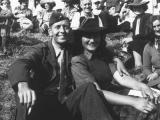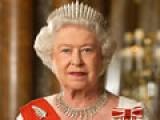The government recognised the Māori (Tino Rangatiratanga) flag as the preferred national Māori flag.
Maori
Events In History
The landmark Te Maori exhibition was a milestone in the Māori cultural renaissance. Featuring traditional Māori artwork, it toured the United States between 1984 and 1986 before returning to New Zealand for a nationwide tour in 1987.
The Labour government created the Tribunal to hear Māori claims of breaches of the Treaty of Waitangi. It has evolved ever since, adapting to the demands of claimants, government and public.
Founded in 1918 by Tahupōtiki Wiremu Rātana (1873–1939), the religious movement that bore his name gave hope to many dispossessed Māori and later became a political force.
Tāwhiao had led his people through the traumatic period during and after the wars of the 1860s. He was succeeded by his son Mahuta.
Just over three weeks after New Zealand women became the first in the world to vote in a national parliamentary election, voting was held in the four Māori electorates.
The Maori Representation Act 1867 established four Māori seats in the House of Representatives, initially for a period of five years. The act gave the vote to all Māori males aged 21 and over.
Moehanga of Ngāpuhi became the first recorded Māori visitor to England when the whaler Ferret berthed in London. Moehanga (Te Mahanga) had boarded the Ferret when it visited the Bay of Islands late in 1805.
Articles
The 1940 Centennial
The centennial celebrations of 1940 marked a century of European effort and progress. Māori history and the centenary of the signing of the Treaty of Waitangi took a back seat. Read the full article
Page 5 - The Treaty of Waitangi
Despite all the talk of the 'birth of a nation', the place of the Treaty of Waitangi or Māori in the centennial celebrations was less
State housing
New Zealand's first state house was formally opened on 18 September 1937. But the government has provided rental housing for New Zealanders for more than a century. Explore the history of this country's various state housing schemes and their contribution to the New Zealand way of life. Read the full article
Page 6 - Making ends meet
For low-paid workers and beneficiaries, making ends meet has always been a constant struggle. Life can be even tougher for those without a home of their
US Forces in New Zealand

The first American soldiers landed on New Zealand soil in June 1942, beginning an 'invasion' which would have a profound impact on both visitors and hosts over the next 18 months. Read the full article
Page 9 - Americans and Māori
After considerable tension between some Americans and Māori, strenuous efforts were made to build inter-racial bridges.
Te Wiki o Te Reo Māori - Māori Language Week
Every year since 1975 New Zealand has marked Māori Language Week - Te Wiki o Te Reo Māori. This is a time to celebrate te reo Māori (the Māori language) and to use more Māori phrases in everyday life. In 2018 Māori Language Week runs from 10-16 September. Read the full article
Page 5 - 1000 Māori place names
For each of the 1000 Māori place names on this page we’ve provided a translation of its component parts and its overall
Māori King movement origins

In May 2008 Māori gathered at Ngāruawāhia to celebrate the 150th anniversary of the formation of the Kīngitanga, or Māori King Movement. The current king, Te Arikinui Tūheitia Paki, was crowned in August 2006 following the death of his mother, Dame Te Atairangikaahu. Read the full article
Page 1 - Origins of the Māori King Movement
In May 2008 Māori gathered at Ngāruawāhia to celebrate the 150th anniversary of the formation of the Kīngitanga, or Māori King Movement. The current king, Te Arikinui Tūheitia
Page 3 - The land issue
Pressure to sell land was a key factor in the creation of the Kīngitanga. Before European settlement Māori had no concept of selling land and few chiefs had the authority to gift
Page 4 - In search of a king
The Kīngitanga has often been described as a Waikato initiative, yet its origins can be traced to Ōtaki on the Kāpiti
Page 6 - A challenge to European authority?
Pōtatau established a boundary between the territory in which his authority held sway and that of the governor: 'Let Maungatautari [River] be our boundary. Do not encroach on this
A frontier of chaos?

In the years before the signing of the Treaty of Waitangi, relations between Māori and Europeans were marred by a number of high-profile incidents. Read the full article
Page 3 - Māori values and practices
Māori responses in the early contact period were determined by well-established customs and
Treaty biographies
Information about some of the key people who have featured in the story of the Treaty of Waitangi Read the full article
Page 1 - Treaty biographies
Information about some of the key people who have featured in the story of the Treaty of
Māori and the vote

Between April and June 1868 the first four Māori MPs were elected to New Zealand's Parliament. Despite ongoing debate, the Māori seats remain a distinctive feature of this country's electoral landscape almost 150 years later. Read the full article
Page 2 - Setting up the Māori seats
Early Māori representation in New Zealand
Page 3 - Change in the 20th century
The fall and rise of Māori seats in the 20th
Page 4 - Further information
Find out more about Māori and the vote in New
Queen Elizabeth II

Queen Elizabeth II became New Zealand's monarch on 6 February 1952, following the death of her father, King George VI Read the full article
Page 4 - Māori and the Queen
Māori ‘were primarily concerned to express their loyalty to the Crown and to win acceptance as New Zealand citizens.’ They were just as enthusiastic about the tour as other New

























